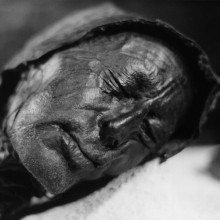A mummified body known as the Cashel man was recently found to be the oldest so called 'bog body' with intact skin anywhere in the world. Here's your quickfire science on how wetlands can preserve ancient human remains with Kate Lamble and Matt Burnett...
In this episode

00:00 - Mind Boggling Bog Bodies
Mind Boggling Bog Bodies
A mummified body known as the Cashel man was recently found to be the oldest so  called 'bog body' with intact skin anywhere in the world. Here's your quickfire science on how wetlands can preserve ancient human remains with Kate Lamble and Matt Burnett
called 'bog body' with intact skin anywhere in the world. Here's your quickfire science on how wetlands can preserve ancient human remains with Kate Lamble and Matt Burnett
- A bog is an area of wetland covered with sphagnum moss and peat or partially decayed vegetation
- Hundreds of bodies preserved in these areas have been uncovered across Europe. Several have been found in Ireland including the Cashel man in County Laois.
- If a body is buried in a bog soon after death the lack of oxygen, low temperatures and high acidity of the environment mean that bacteria cannot begin to decompose the body, preserving internal organs, clothes and even hair.
- However over time, bodies are often crushed under the weight of the peat and the acidic conditions dissolve the calcium in the deceased's bones, making them either floppy or completely vanish.
- Not all bogs preserve bodies equally well. Lower levels of acidity and higher water flow can turn some remains into skeletons rather than mummies.
- Once removed from the bog Cashel man needs to be sprayed with non-ionised water to prevent it from decaying at room temperatures. In the long term, bodies are preserved by soaking them in a water soluble polymer and then freeze drying the remains.
- Radiocarbon dating suggests that Cashel man is around 4,000 years old, dating from the early Bronze Age. This is earlier than most bog bodies which date from the Iron Age
- However we don't know if how closely he is related to the current Irish population as the preservation process also destroys DNA material.
- Bodies are typically uncovered by those digging for peat to use as fuel. The first recorded discovery of a bog body was in the 17th century and for the next two hundred years bodies were typically buried in graveyards as it was presumed they were modern victims.
- A high number of bog bodies have been found to have died of violent wounds, leading archaeologists to speculate that some may have been sacrifices. Cashel man's spine was broken several times, and there was evidence of a sword or axe cut on his arm.









Comments
Add a comment